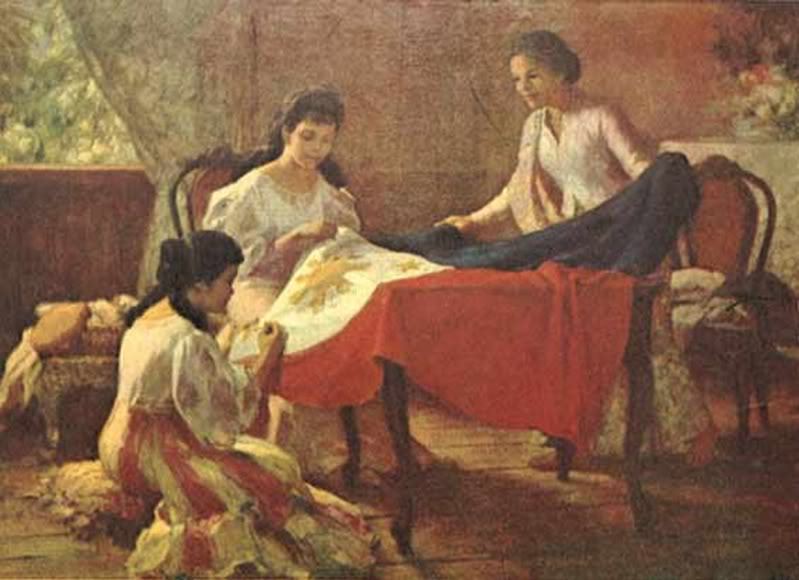One of the
most significant dates in the Philippines' history is Independence Day because
it marks the nations' Independence from the Spanish rule on 12th day
of June, 1898. Filipinos celebrate it annually on June 12. We all know that
Independence Day is the day when many people including government officials,
employee, and students, participate in nationwide parades. However the main
highlights is the police military parade in Manila headed by the country's
incumbent president followed by speech and 21-gun salute.
In the
Philippines, we have a long history of colonization and rule by foreign
countries such as Spain, United States of America, and Japan. Some of
these rulers were more kind and benevolent than others, but all of the time
under foreign rule helped develop the unique culture of the Philippines that
can be seen today. As far as I know, the history of colonization in the
Philippines starts in the year 1521 where the Spaniards arrived and colonized
the Philippines and day ruled for more than 333 years for the year 1521 until
1981. After the defeat of Spaniards in the Spanish-American war of 1898, Spain
ceded its long standing colony to the Philippines to the United States in
Treaty of Paris. In that year, Filipino forces had liberated much of the
country from the Spanish on 12th day of June, 1898. Then for 43
years, Americans was the one who ruled the Philippines from 1898 until 1941.
General Emilio Aguinaldo issued the Philippine declaration of Independence
declaring independence from Spain. The earlier design of current Philippine
flag was conceptualized by Emilio Aguinaldo during his exile in British
Hongkong at 1897.
The first flag was sewn by Doña Marcela Mariño de Agoncillo, with the help of her daughter Lorenza and Delfina Herbosa Natividad (a niece of propagandista Jose Rizal)and it was displayed in the battle of Alapan on 28th day of may 1898.
The said flag
was formally unfold during the proclamation of independence on 12th day
of june, 1898 in Kawit, Cavite.
During the Philippine Revolution, the various flags were used by the Katipunan Secret Society and its various factions and later, the katipunan had beeb dissolved, the Philippine Army and its civil government. With the establishment of katipunan, Andres Bonifacio requested his wife, Gregoria de Jesus, to create the flag of for the society.
De Jesus devised a simple red Flag bearing the society’s acronym KKK, with the white and arranged horizontally at the centre and this became the society’s first Flag.
Bonifacio stated the “K” in
the middle of the sun stood for Kalayaan of freedom. One variation has the three
K’s arrange in the form of triangle and some others used a red flag with only
one K.
Andres Bonifacio was also a
member of La Liga Filipina. He founded the KKK, which stands for Kataas-taasang
Kagalang-galang Katipunan ng Anak ng Bayan (“Supreme and Honorable Society of
the Sons of the Nation” or “Suprema Y Venerable Asociacion De Los Hijos del Pueblo”)
also known as Katipunan, was a Philippine revolutionary Society founded by Anti
Spanish colonialism Filipinos in Manila in the year 1892, whose, primary aim
was to gain indepndence from spain through a revolution. The society has been
organized as early sa january 1892 but may not have become active until 7th
day of july of the same year, on the night when Filipino writer, Jose
Rizal was to be banished to Dapitan earlier in the day. Founded by Filipino
patriots Andres Bonifacio, Teodoro Plata, Ladislao Diwa, and others and
initially, the Katipunan was a secret organization until its discovery in year
1896 that led to the outbreak of the Philippine Revolution. The Katipunan had
colourful beginnings.
As a symbol of member’s
loyalty, they performed the solemn rite of “Sanduguan” (blood compact), wherein
which one signed Bonifacio’s name with blood.
And the last to rule over
the Philippines was the Japanese in the year 1941 until 1945.The Japanese
occupation of the Philippines occurred between 1942 and 1945, when Imperial
Japan occupied the Commonwealth of the Philippines during World War II.
The invasion of the Philippines started on 8th December 1941, ten hours after the attack on Pearl Harbor.
The invasion of the Philippines started on 8th December 1941, ten hours after the attack on Pearl Harbor.
References:
Image
Links



No comments:
Post a Comment